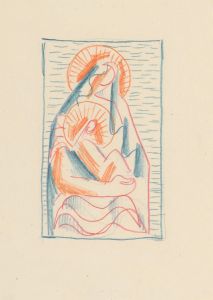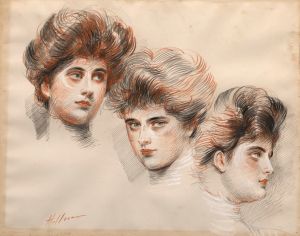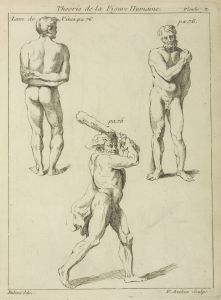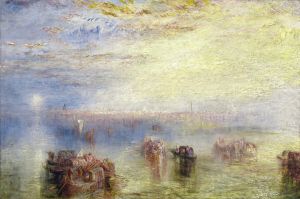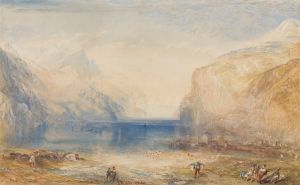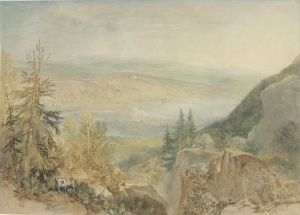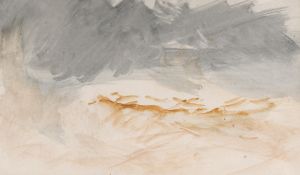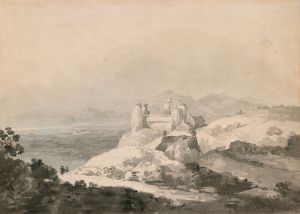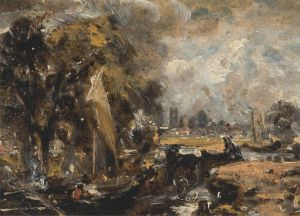
The Channel Sketchbook 37
A hand-painted replica of Joseph Mallord William Turner’s masterpiece The Channel Sketchbook 37, meticulously crafted by professional artists to capture the true essence of the original. Each piece is created with museum-quality canvas and rare mineral pigments, carefully painted by experienced artists with delicate brushstrokes and rich, layered colors to perfectly recreate the texture of the original artwork. Unlike machine-printed reproductions, this hand-painted version brings the painting to life, infused with the artist’s emotions and skill in every stroke. Whether for personal collection or home decoration, it instantly elevates the artistic atmosphere of any space.
Joseph Mallord William Turner, an eminent British artist, is renowned for his evocative landscapes and seascapes, which often capture the sublime power of nature. Among his extensive body of work is "The Channel Sketchbook 37," a piece that exemplifies his mastery in watercolor and his keen interest in maritime subjects. Turner, born in 1775, was a pivotal figure in the Romantic movement, and his works are celebrated for their innovative use of light and color.
"The Channel Sketchbook 37" is part of a series of sketchbooks that Turner used throughout his career to capture scenes and ideas that would later inform his larger works. These sketchbooks are invaluable for understanding Turner's creative process, as they provide insight into his preliminary thoughts and the development of his compositions. The Channel Sketchbook, in particular, is believed to have been used during Turner's travels along the English Channel, a frequent subject in his oeuvre.
Turner's sketchbooks were not merely for practice; they were integral to his artistic method. He often sketched en plein air, directly observing the natural world and capturing fleeting moments with remarkable speed and accuracy. This approach allowed him to experiment with composition, perspective, and the interplay of light and shadow, elements that would become hallmarks of his finished paintings.
While specific details about "The Channel Sketchbook 37" are limited, it is likely that this work, like others in the series, features studies of coastal scenes, ships, and the sea. Turner's fascination with the sea is well-documented, and he frequently depicted it in various states, from calm and serene to tumultuous and stormy. His ability to convey the dynamic and often unpredictable nature of the sea is one of the reasons his maritime works are so highly regarded.
Turner's use of watercolor in his sketchbooks is particularly noteworthy. Watercolor allowed him to quickly capture the transient effects of light and atmosphere, which were central to his artistic vision. His skillful manipulation of this medium enabled him to create works that are both detailed and atmospheric, a balance that few artists have achieved with such consistency.
The Channel Sketchbook, including "The Channel Sketchbook 37," is housed in the collection of the Tate Britain, which holds the largest collection of Turner's works. These sketchbooks are considered a vital part of Turner's legacy, offering scholars and art enthusiasts a glimpse into the mind of one of Britain's most celebrated artists. They reveal not only his technical prowess but also his relentless curiosity and dedication to capturing the essence of the natural world.
In summary, "The Channel Sketchbook 37" by J.M.W. Turner is a testament to the artist's skill and his enduring fascination with the sea. Although specific details about this particular sketch are scarce, it remains an important piece within the broader context of Turner's work, illustrating his innovative approach to capturing the sublime beauty of nature.





